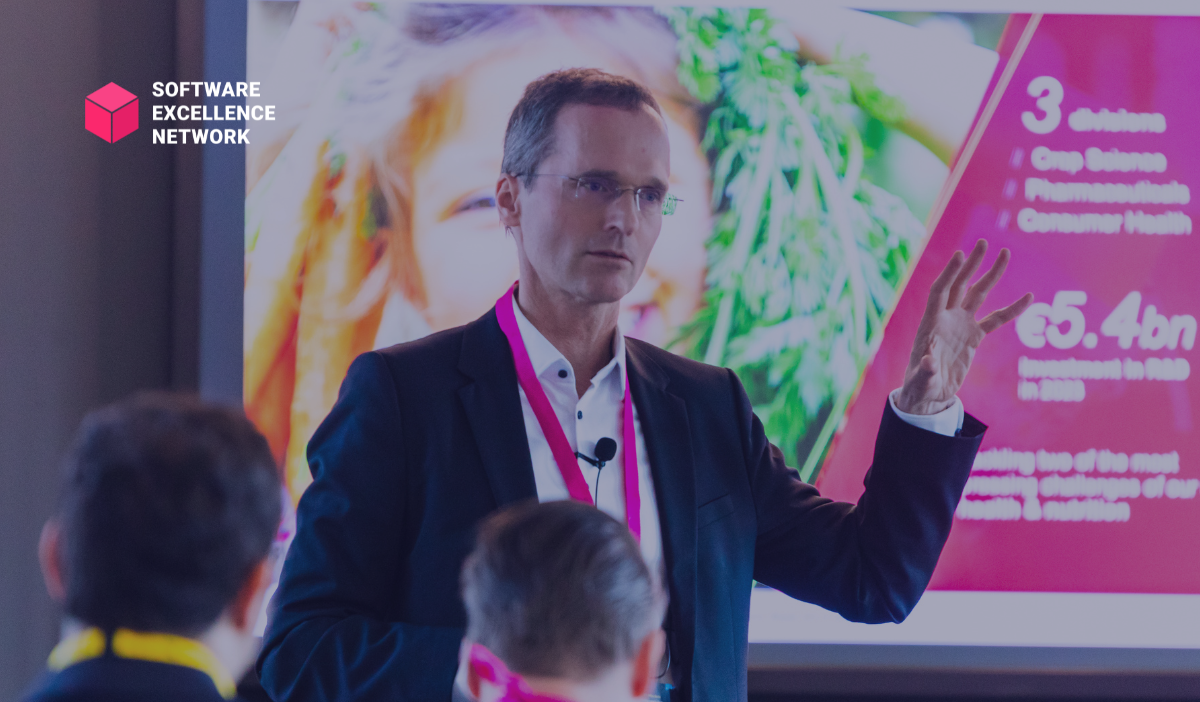
Bayer, a global leader in life sciences, is navigating a complex digital landscape as it balances maintaining legacy systems with driving innovation in software development. During the Envisioning Tomorrow’s Code executive exchange, Dr. Bernd Lohmann, CTO of Bayer, shared insights into the company’s digital transformation journey.
With a mission of “Health for All, Hunger for None,” Bayer is tackling challenges in pharmaceuticals, crop science, and consumer health through a blend of advanced software development practices, data integration, and cutting-edge technology like generative AI.
Bayer operates a vast software landscape with over 6,000 applications, 80% of which are legacy systems. These systems, including SAP ECC and molecular modeling tools, remain critical for operations but present challenges for modernization.
"Legacy is a reality we must face," Dr. Lohmann explained. While modern solutions drive innovation in areas like AI and agile development, much of Bayer’s resources are still tied to maintaining and optimizing older systems.
This dichotomy creates a challenging dynamic: investing in the future while managing the infrastructure of the past.
Bayer’s approach to software development reflects its specialized mission in life sciences. From creating advanced agricultural tools to accelerating pharmaceutical research, Bayer relies on software to solve complex, real-world problems.
Examples of innovation include:
This approach requires developers with deep domain knowledge, such as bioinformaticians and geneticists, who can integrate scientific understanding with technical expertise.
Over the last decade, Bayer has embarked on a significant transformation, adopting agile principles across the organization. Recent efforts include:
This transformation extends to Bayer’s approach to software development, where agile teams focus on areas that provide the greatest competitive advantage, such as AI and biotechnology tools.
Generative AI is becoming a core part of Bayer’s innovation strategy. The company uses tools like GitHub Copilot for code development, along with custom-trained AI models to ensure security and effectiveness.
Bayer’s applications of generative AI include:
However, as Dr. Lohmann noted, AI adoption requires caution, particularly in ensuring data security and reliability. Sensitive data, such as proprietary research or patient information, must be safeguarded through in-house AI models and rigorous oversight.
Scaling generative AI across Bayer’s global operations presents significant infrastructure challenges. Dr. Lohmann highlighted concerns about compute power and network capacity, particularly in regions like Germany.
“These limitations could hinder the scalability of AI-driven processes,” he warned, emphasizing the need for industry-wide collaboration to address these bottlenecks.
While much attention is given to cutting-edge developments, Dr. Lohmann stressed that Bayer’s digital transformation must also account for the operational realities of maintaining legacy systems.
Approximately 7,000 offshore workers support Bayer’s legacy infrastructure, compared to around 300 developers focused on innovative projects. This balance underscores the importance of optimizing resources while prioritizing areas that drive differentiation and competitive advantage.
Bayer’s transformation journey illustrates the challenges and opportunities of balancing legacy systems with innovation. By embracing agile principles, investing in generative AI, and addressing infrastructure challenges, Bayer is positioning itself to navigate the complexities of the digital age.
Through a focus on differentiated solutions and a commitment to innovation, Bayer is advancing its mission: Health for All, Hunger for None.
This article provides a journalistic summary of the ideas shared by Dr. Bernd Lohmann during his presentation. While we’ve highlighted the key concepts and innovations he discussed, the full depth of his insights and examples can only be appreciated by watching the complete session. If you’re intrigued by these ideas and want to hear them explained directly by the speaker, we encourage you to watch the full video of his presentation. If you have any questions or concerns, please contact us.
These Stories on Events/Webinars
August-Bebel-Str. 26-53
14482 Potsdam, Germany
hello@seerene.com
+49 (0) 331 706 234 0
Generative AI Seerene GmbH
August-Bebel-Str. 26-53
14482 Potsdam, Germany
hello@seerene.com
+49 331 7062340